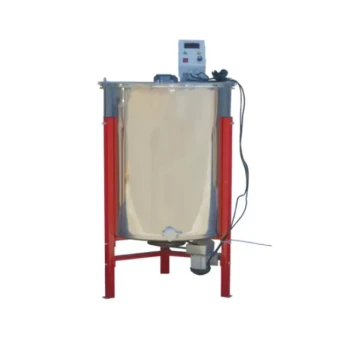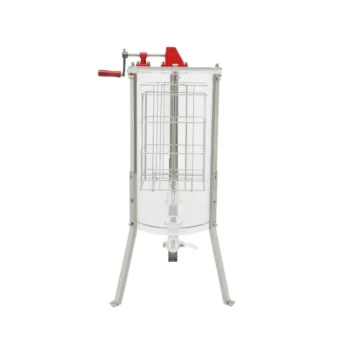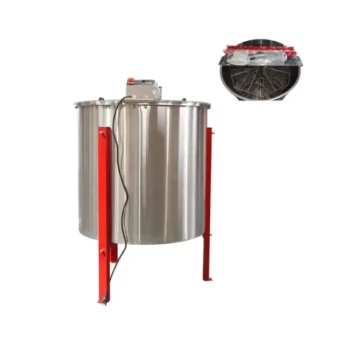Automated honey extractors revolutionize honey harvesting by dramatically improving time efficiency, especially for commercial beekeepers. These systems enable simultaneous processing of multiple frames, eliminate manual cranking, and maintain consistent extraction speeds—reducing processing time by up to 70% compared to manual methods. Their electric motor operation ensures continuous productivity without operator fatigue, making them indispensable for large-scale operations during peak seasons. While requiring higher initial investment and power access, the long-term time savings and labor reduction justify the cost for professional beekeepers prioritizing throughput.
Key Points Explained:
-
Simultaneous Multi-Frame Processing
- Automated (electric honey extractor)[/topic/electric-honey-extractor] systems can process 20-120 frames per cycle (vs. 2-4 in manual models), cutting extraction time by 60-80%.
- Example: A 60-frame radial extractor completes in 15 minutes what would take 2+ hours manually.
- Consideration: Frame capacity directly correlates with time savings—larger operations benefit most from high-capacity models.
-
Consistent Motorized Operation
- Electric motors maintain optimal 300-400 RPM speeds automatically, eliminating:
✓ Speed fluctuations from manual cranking
✓ Operator fatigue during long sessions - Smart models feature programmable speed profiles for different honey types (e.g., slower for delicate comb honey).
- Electric motors maintain optimal 300-400 RPM speeds automatically, eliminating:
-
Reduced Labor Dependencies
- One operator can manage the entire extraction process—loading, spinning, unloading—reducing crew needs by 50-75%.
- Critical during peak flows when 80% of annual honey may be harvested in just 2-3 weeks.
- Tradeoff: Requires power access (battery/generator solutions add 5-10% setup time).
-
Integrated Time-Saving Features
- Modern automated extractors include:
- Auto-reversing mechanisms (no manual frame flipping)
- Honey gates with large-bore valves (faster draining)
- Stainless steel construction (5-minute cleanups vs. 30+ minutes for manual cleaning).
- Modern automated extractors include:
-
Scalability Advantages
- A commercial beekeeper with 1,000 hives saves ~200 labor hours annually versus manual extraction—time reallocated to colony management or market expansion.
- Data point: USDA reports apiaries >300 colonies achieve 3x higher productivity with automation.
The physical and temporal efficiencies of automated systems create compounding benefits—every hour saved in extraction can be reinvested in colony care or business growth. For sideliners scaling up or commercial operators, these systems transform honey harvesting from a bottleneck into a streamlined process.
Summary Table:
| Advantage | Time Savings | Key Benefit |
|---|---|---|
| Multi-Frame Processing | 60-80% faster than manual methods | Process 20-120 frames simultaneously (vs. 2-4 manually) |
| Consistent Motorized Speed | No speed fluctuations or fatigue | Maintains optimal 300-400 RPM automatically |
| Reduced Labor Dependencies | 50-75% fewer crew members needed | One operator can manage loading, spinning, and unloading |
| Integrated Features | Faster draining and cleaning | Auto-reversing mechanisms, large-bore honey gates, stainless steel construction |
| Scalability | ~200 labor hours saved annually | Critical for apiaries with 300+ colonies |
Ready to streamline your honey harvest? Contact HONESTBEE today to explore automated extractors for your commercial apiary or distribution needs!



















